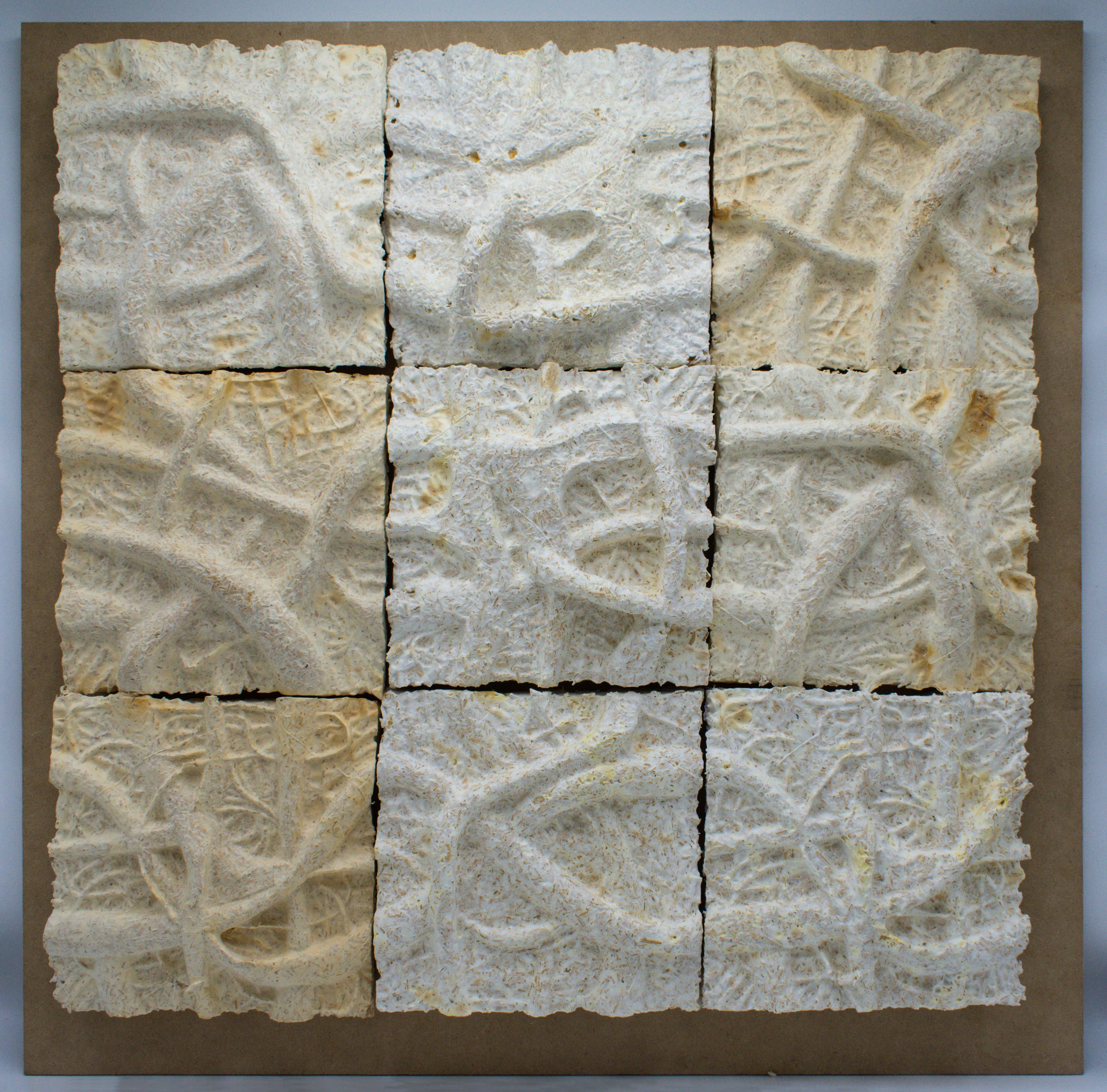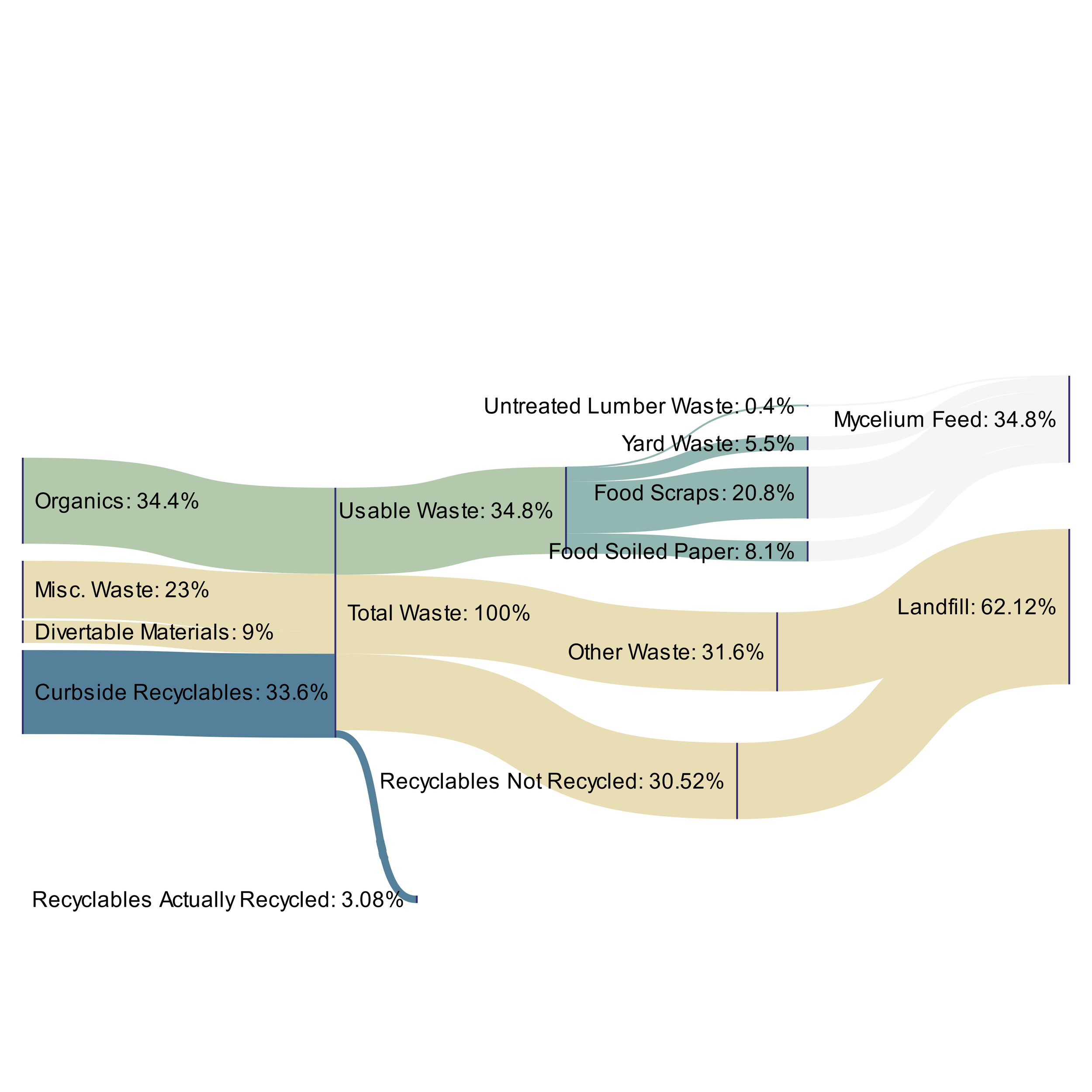Mycelium



Mycelium Panel Design
Mycelium is a “mass of branched, tubular filaments (hyphae) of fungi.” It is created by excreting enzymes from molecular amounts of food waste as it grows in a network of microscopic fibers. Inspired by mycelium scanning electron microscope (SEM) photographs, we created positive molds of 3D printed panels to grow mycelium acoustic panels. We utilized the acoustic strategy of increased surface area to redirect sound throughout an enclosed space.
A variety of materials including coffee grounds, sawdust, vegetable pulp, and hydrogels were tested. With these experiments we were able to analyze and record the porosity and durability of the experimental acoustic panels. We created four different panel types that resemble a network of bifurcating hyphae, creating a Truchet tiling system. This ensured continuity of the larger fibrous network in our design.
The most successful approach was using the Ecovative GIY Kit, a “wake make bake” system, improving the efficiency of production allowing us to create more panels quickly. We took the 3D printed positives and used a vacuum former to create the negatives of the panels which is where the mycelium grew. After about 5 days of growth the mycelium was removed from its mold and baked until its weight was 35% of its initial weight. Mycelium is proving to be a beneficial alternative material to traditional plastics and with more refined studies, could become a leading material in our built environment.
Project Date: Spring 2022
Researchers: Josh Draper, Tommy Giordano, Gillian Strothenke
Other Work Linked to this Research:

